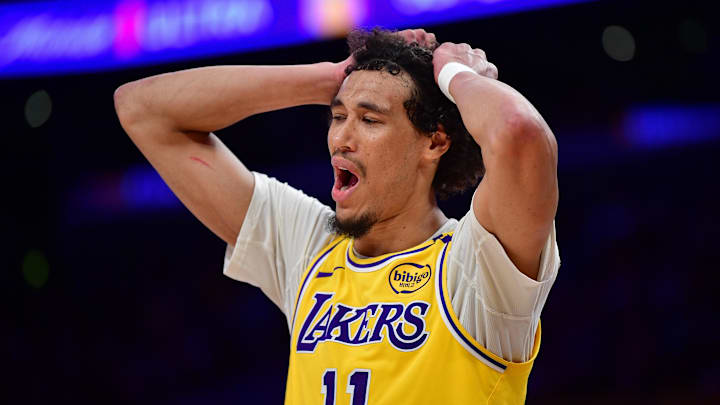It seems the Los Angeles Lakers are officially done making moves for the 2025 offseason, finalizing their frontcourt by acquiring DeAndre Ayton and signing backup forward Jake LaRavia to round out the bench.
But in a free agency period already deemed underwhelming by most fans, the Lakers decided to double down — literally — by bringing back a player many were ready to move on from: Jaxson Hayes.
ESPN’s Bobby Marks broke down the Lakers’ cap sheet after the signings of Ayton and LaRavia, detailing who’s guaranteed and what flexibility (or lack thereof) the front office has left. The most confusing line item? Hayes’ new one-year, $3.45 million contract.
Sure, it’s a small number in NBA terms — slightly above the minimum. But that slight difference comes with significant implications.
Rob Pelinka made a mistake with Jaxson Hayes
By giving Hayes more than the veteran minimum, the Lakers now lose access to most of their $5.1 million Biannual Exception due to the first apron cap rules. Even if they waived Shake Milton — who’s taking up $3 million on the books — the math doesn’t change. What’s left now is a veteran minimum contract and a second-round pick exception. That’s it.
And this raises the question: Why pay Hayes above the minimum at all?
Last season, Hayes was essentially in the right place at the wrong time. After the blockbuster trade that sent Anthony Davis to the Dallas Mavericks for Luka Dončić, Hayes stepped into a much bigger role. Early on, he looked solid — scoring in double figures on occasion and offering decent rim protection.
But as the season progressed, head coach JJ Redick gradually phased him out of the rotation in favor of small-ball lineups. By the time the playoffs rolled around, Hayes averaged just 7.5 minutes across four games, barely making a dent with 1.8 points and 2.0 rebounds per outing. He never logged more than 10 minutes in a single playoff game, and the Lakers were badly outmatched on the boards by the Minnesota Timberwolves.
Given how little he contributed when it mattered most, many assumed Hayes would be let go — or at the very least, brought back on a minimum deal.
Instead, Rob Pelinka used up valuable cap room on a player Redick didn’t trust when it counted.
Yes, Hayes can still be a low-risk, high-reward player off the bench. He’s athletic, has a strong vertical presence, and can finish lobs in transition. But the optics — and opportunity cost — of this deal remain puzzling.
That extra money could’ve gone toward a more impactful positional fit or given the Lakers wiggle room for in-season maneuvering.
Instead, fans are left with the same question they had last year: What exactly is the plan?
And unless Hayes suddenly breaks out in year three, they may never get an answer.
